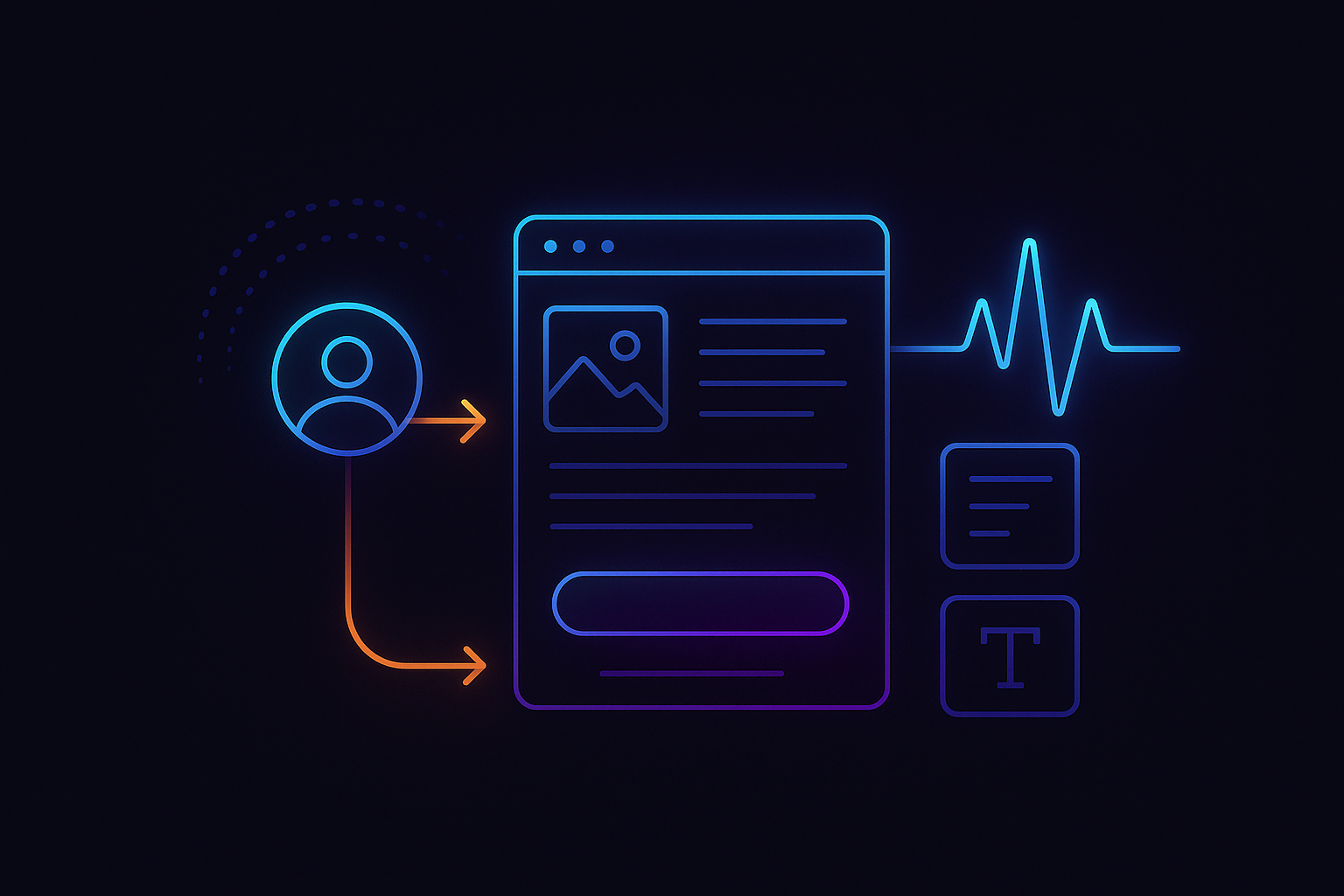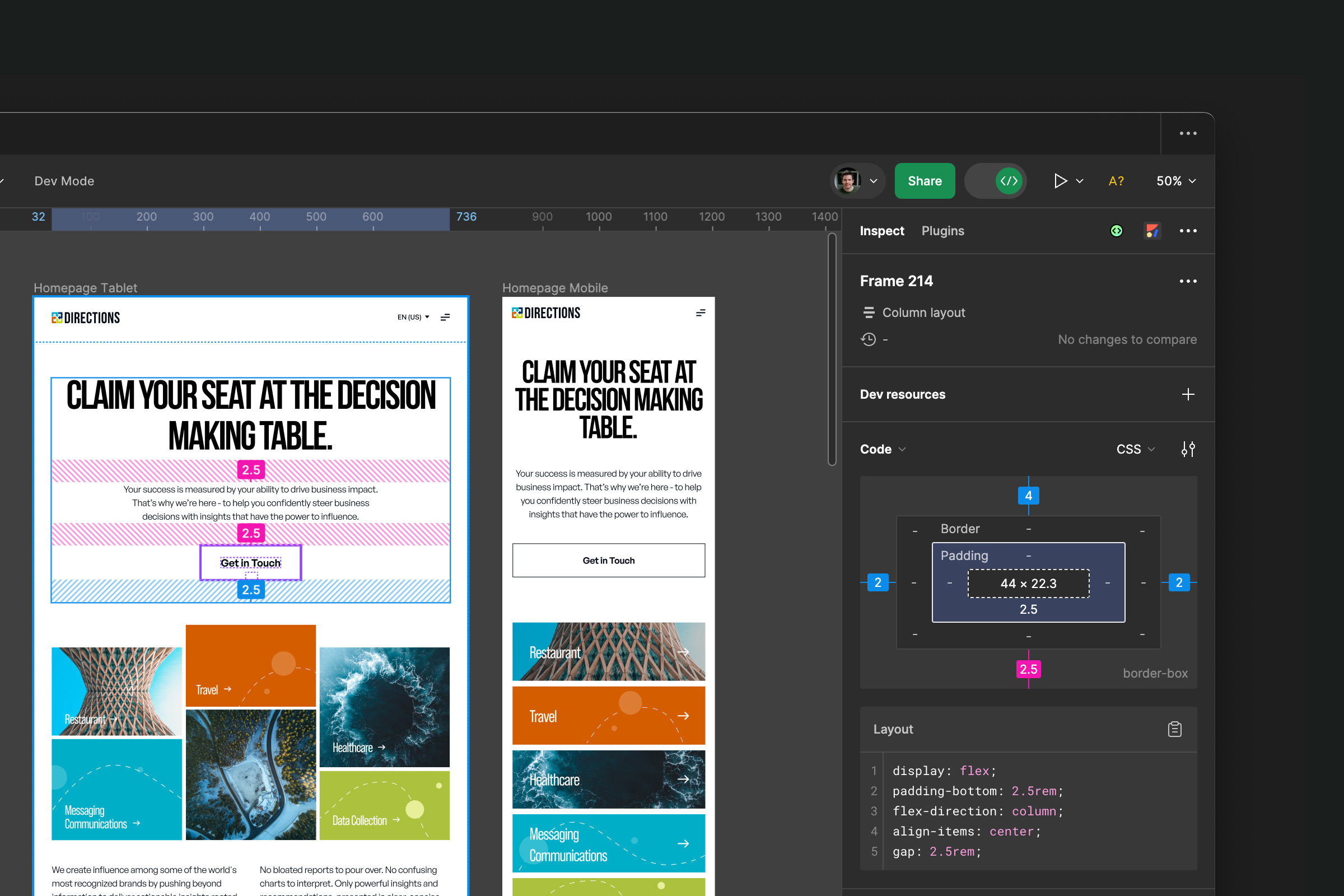Insights
The Ultimate Guide to Creating and Mastering Website KPIs

Understanding your website KPIs can make or break your entire organization.
Don’t believe me? Just ask BuzzFeed News.
Oh wait…. You can’t.
But we’ll get to that in a minute.
Your organization’s digital KPIs (Key Performance Indicators), such as website traffic, conversion rates, bounce rates, and social media engagement, offer a clear view of how well your organization connects with its audience online.
Why is that important to know?
This key information provides insights into user behavior and trends, and helps you evaluate the success of marketing campaigns, while identifying areas for improvement and innovation.
This comprehensive guide will explore the essentials of website KPIs, how to set them up and monitor them for your company, and provide real-world examples to illustrate their impact.
What is a Website KPI?
Website KPIs or digital KPIs are quantifiable measures used to evaluate the performance and success of a website against its objectives. These metrics are indispensable for businesses aiming to optimize their online presence, enhance user engagement, and ultimately drive conversions and revenue.
5 Steps to Defining your Website’s KPIs
- Identify Your Goals: Begin by defining what success looks like for your website. Is it sales, subscriptions, or simply engagement?
- Choose Your KPIs Wisely: Not all KPIs are created equal. Select those that align with your goals and will truly illuminate your path to success.
- Set Up Proper Tracking: Equip yourself with the right tools and ensure they're configured correctly. Google Analytics is a great starting point, but don't overlook other platforms that might offer unique insights.
- Analyze and Adapt: The digital landscape is ever-changing. Regularly review your KPIs, interpret the stories they tell, and be ready to adjust your strategy accordingly.
- Quality Over Quantity: Remember, a horde of visitors means little if they don't engage with your content or convert. Focus on attracting the right audience, not just a larger one.
1. Identifying Comprehensive Online Goals for Your Company

The first step for determining your website's KPIs is to define what success looks like for your business. This definition of success should be as unique as your business, reflecting your industry, company type, market position, and long-term vision.
Below, we delve into a list of potential online goals that companies across various sectors might consider. These goals are not mutually exclusive and often intersect, offering a multi-faceted approach to digital success.
1. Increasing Brand Awareness
For many businesses, especially startups and those entering new markets, the primary objective is to increase brand awareness. This involves strategies aimed at making more people recognize and recall your brand.
- Social Media Presence: Growing your followers and engagement on platforms relevant to your audience.
- Content Marketing: Publishing valuable content that gets shared and talked about.
- SEO Rankings: Achieving higher rankings for your website on search engines for relevant keywords.
2. Driving Website Traffic
Closely related to brand awareness, driving more traffic to your website is a fundamental goal for many businesses. This includes attracting both new and returning visitors through various channels.
- Organic Search Traffic: Improving SEO to increase traffic from search engines.
- Paid Advertising: Using PPC campaigns to drive traffic.
- Referral Traffic: Increasing visits from other websites linking to your site.
3. Generating Leads
For businesses, especially in the B2B sector or those with longer sales cycles, generating qualified leads is a primary goal. This involves collecting information from interested prospects to nurture them towards a sale.
- Lead Magnets: Offering valuable resources in exchange for contact information.
- Landing Page Conversions: Optimizing landing pages to encourage sign-ups or inquiries.
- Webinars and Events: Hosting online events to collect leads.
4. Increasing Sales and Revenue
Directly linked to the bottom line, increasing sales and revenue is a clear goal for e-commerce sites and other businesses focused on online transactions.
- Conversion Rate Optimization: Tweaking website elements to increase the percentage of visitors who make a purchase.
- Average Order Value: Encouraging customers to spend more per transaction.
- Customer Lifetime Value: Implementing strategies to increase the total amount each customer spends over their lifetime.
5. Enhancing Customer Engagement and Loyalty
Engaging customers and fostering loyalty are crucial for long-term success. This involves creating a positive experience that keeps customers coming back.
- Interactive Content: Using quizzes, polls, and interactive videos to engage visitors.
- Loyalty Programs: Offering rewards for repeat purchases or referrals.
- Community Building: Creating a sense of community through forums, social media groups, or membership programs.
6. Improving Customer Service and Support
Offering stellar customer service and support can set your business apart, turning customers into advocates.
- Live Chat and Bots: Providing immediate assistance to website visitors.
- FAQ and Knowledge Bases: Offering self-serve resources to help customers find answers quickly.
- Feedback Loops: Collecting and acting on customer feedback to improve service.
7. Expanding into New Markets
For established businesses looking to grow, expanding into new geographical or demographic markets online is a strategic goal.
- Localized Content: Creating content tailored to new target markets.
- Market Research: Using online tools to understand the needs and preferences of new audiences.
- Partnerships and Collaborations: Working with local influencers or businesses to gain traction in new markets.
8. Building Thought Leadership
Positioning your company or key individuals within your company as experts in your industry can attract more business and elevate your brand.
- Expert Content: Publishing in-depth articles, whitepapers, and research.
- Speaking Engagements: Participating in webinars, podcasts, and industry panels.
- Awards and Recognition: Pursuing industry awards and certifications.
Considering Industry, Company Type, and Other Factors
The goals you prioritize should reflect your industry, the maturity of your business, your target audience, and your competitive landscape. For instance, a tech startup might focus on brand awareness and lead generation, while an established e-commerce brand might prioritize customer loyalty and increasing average order value.
2. Choose Your KPI’s Wisely
Whether you're looking to enhance brand awareness, boost sales, or increase engagement, the KPIs you choose should reflect your objectives and provide actionable insights. Let's dive deeper into how to choose your KPIs wisely and explore a list of potential KPIs that could be pivotal for your online success.
Understanding Your Objectives
The first step in choosing your KPIs wisely is crystal clear understanding of your business objectives. Are you aiming to grow your online presence, increase sales, or improve customer loyalty? Your objectives will dictate which KPIs are most relevant to your strategy.
For instance, if your goal is to enhance brand awareness, you might focus on KPIs related to social media engagement and website traffic. Conversely, if increasing sales is your aim, conversion rates and average order value might be your focus.
Aligning KPIs with Business Goals
Once you've defined your objectives, align your KPIs with these goals. This alignment ensures that the metrics you track are directly contributing to your business's success. It's about making sure every KPI has a clear purpose and a direct impact on your overall strategy.

A List of Possible KPIs for Online Success
To help you navigate through the many options, here's a curated list of possible KPIs to consider, categorized by common business objectives:
For Enhancing Brand Awareness:
- Website Traffic: Total number of visits to your website.
- Social Media Followers and Engagement Rates: Growth in followers and engagement on platforms like Instagram, Facebook, and Twitter.
- Brand Mentions: How often your brand is mentioned across the web.
For Increasing Sales:
- Conversion Rate: The percentage of website visitors who take a desired action (e.g., making a purchase).
- Average Order Value (AOV): The average amount spent each time a customer places an order.
- Revenue Growth Rate: The rate at which your revenue is growing over a specific period.
For Improving Customer Engagement and Loyalty:
- Customer Lifetime Value (CLV): The total revenue you can expect from a single customer account.
- Net Promoter Score (NPS): A measure of customer loyalty and satisfaction.
- Repeat Purchase Rate: The percentage of customers who have made more than one purchase.
For Optimizing User Experience:
- Bounce Rate: The percentage of visitors who navigate away from the site after viewing only one page.
- Page Load Time: The average time it takes for a page to show up on the screen.
- Mobile Site Traffic: The percentage of total site traffic coming from mobile devices.
Example: BuzzFeed's Content Strategy Misstep and Demise

BuzzFeed News, once a pioneering force in digital journalism, is a cautionary tale of what can happen when KPIs are done wrong.
BuzzFeed News primarily focused on social media engagement and traffic as their key metrics for success, while ignoring broader KPIs that lead to revenue generation. This decision ultimately led to their demise - the company shut down last April.
Here are some of the key mistakes that were made:
- Over-Reliance on Social Media: Changes in social media algorithms, which prioritized short-form vertical videos to keep users within their ecosystems, drastically reduced referrals to news sites, including BuzzFeed News.
- Lack of Diversified Traffic Sources: The failure to develop a more diversified strategy for traffic acquisition left BuzzFeed News vulnerable to changes in social media algorithms.
- Economic Conditions: The general tough advertising market, compounded by a decrease in site referrals from social media, made it difficult for BuzzFeed News to maintain profitability.
- Changing Ecosystem: Brand safety concerns and the programmatic advertising market's preference for "safer" content further limited advertising revenue opportunities for news publishers.
- Operational and Financial Decisions: The decision to shut down BuzzFeed News was attributed to the broader economic conditions and the company's strategic focus on more profitable business segments. Ultimately, shutting down BuzzFeed News may be supporting other KPIs for the business.
What can we learn from the Buzzfeed News shutdown?
The closure of BuzzFeed News underscores the importance of continuously monitoring and adapting website KPIs to our changing digital world.
Organizations must:
- Diversify Traffic Sources: Avoid over-reliance on any single platform or traffic source. Develop a multi-channel strategy that includes SEO, email marketing, direct traffic, and partnerships.
- Adapt to Platform Changes: Stay agile and responsive to changes in technology algorithms and user behavior. Invest in content and distribution strategies that align with these evolving platforms.
- Focus on Financial Sustainability: Explore diverse revenue streams beyond advertising, such as subscriptions, memberships, and sponsored content, to build a more resilient financial model.
- Engage Directly with Audiences: Build a loyal community through direct engagement strategies that do not solely depend on third-party platforms. This can include newsletters, forums, and exclusive content offerings.
3. Setting Up Proper Tracking: Mastering Google Analytics and Exploring Additional Tools

When considering KPIs for your website, data is your compass, guiding every decision and strategy with precision. To navigate this landscape, setting up proper tracking is extremely important.
Google Analytics stands as the cornerstone of web analytics tools, offering a wealth of data about your website's performance. To truly harness its power, you must go beyond the default settings and tailor it to your specific needs. Additionally, exploring other analytics tools can provide unique insights and complement the data from Google Analytics.
Google Analytics: Configuration Essentials
To ensure you're capturing the right metrics in Google Analytics, consider these key configurations:
- Goals Setup: Identify key actions you want users to take on your site (e.g., form submissions, product purchases, sign-ups) and set them up as Goals. This allows you to track conversions and measure how well your site fulfills your target objectives.
- E-commerce Tracking: If you're running an e-commerce site, enable e-commerce tracking. This gives you insights into sales data, including transaction details, revenue, and product performance.
- Event Tracking: Use Event Tracking to measure interactions that don't correspond to a webpage loading, such as downloads, video plays, and clicks on outbound links. This provides a deeper understanding of how users engage with your content.
- Custom Dimensions and Metrics: Customize Google Analytics to track additional data points specific to your business, such as user types (e.g., members vs. non-members) or content categories.
- Filters and Segments: Apply filters to exclude internal traffic and other irrelevant data. Use segments to analyze specific subsets of your data, like traffic from social media or visits by returning customers.
- Linking Google Analytics with Other Google Tools: Connect Google Analytics with Google Ads, Search Console, and Google Tag Manager to enrich your data and streamline your tracking setup.
Google Analytics Help Center: For detailed instructions on configuring these settings, visit Google Analytics Help.
Beyond Google Analytics: 5 Popular Tools for Unique Website Insights
.png)
While Google Analytics provides a comprehensive overview of website performance, integrating other tools can offer specialized insights and enhance your data-driven decision-making. Here is a shortlist of a few of the top contenders:
- Hotjar: Offers heatmaps, session recordings, and surveys to understand how users interact with your site visually and what areas attract the most attention.
- SEMrush: A powerful tool for SEO and SEM, providing insights into your site's search performance, keyword rankings, and competitor analysis.
- Crazy Egg: Similar to Hotjar, it provides heatmaps and user session recordings, along with A/B testing capabilities to optimize your website's user experience.
- Mixpanel: Focuses on user interaction with web and mobile applications, offering detailed analytics on user behavior and engagement through event tracking.
- Ahrefs: An essential tool for SEO analysis, including backlink checking, content research, and competitive analysis to improve your site's visibility in search engines.
Each of these tools offers unique features that can complement the data you gather from Google Analytics, providing a more rounded view of your website's performance and user behavior. By integrating these tools into your analytics toolkit, you can uncover deeper insights, optimize your online presence more effectively, and ultimately drive better business outcomes.
4. Analyze and Adapt: Where Digital Evolution meets Darwin
If you aren’t actively adapting to our constantly changing online world, you will inevitably suffer the consequences of your stagnation. A proactive approach to KPI management ensures that your strategies remain aligned with current trends, technologies, and user behaviors.
Here are several ways to analyze, interpret, and adapt your strategies based on website KPIs, along with resources to stay informed.
1. Regular KPI Reviews
- Set a Schedule: Conduct regular (monthly, quarterly) reviews of your KPIs to assess performance against your goals. This helps identify trends, opportunities, and areas needing improvement.
- Use Dashboards: Utilize analytics dashboards (Google Analytics, SEMrush, etc.) to visualize data and make it easier to spot trends over time.
2. Deep Dive into Analytics
- Segmentation: Break down your data by channels, content types, user demographics, etc., to uncover deeper insights into what's working and what's not.
- Behavior Flow Analysis: Use tools like Google Analytics' Behavior Flow to understand how users navigate through your site and where you might be losing them.
3. A/B Testing
- Iterative Testing: Regularly test different aspects of your website and marketing campaigns (e.g., landing pages, email subject lines) to optimize performance based on real user data.
- Tools for A/B Testing: Platforms like Optimizely or VWO can help streamline the testing process.
4. User Feedback
- Surveys and Polls: Tools like SurveyMonkey or Google Forms can be used to gather direct feedback from your audience about their experience and expectations.
- User Testing: Platforms like UserTesting.com provide insights into how real users interact with your site, offering valuable feedback for improvement.
5. Competitive Analysis
- Benchmarking: Compare your performance against industry benchmarks or direct competitors to identify areas where you can improve or differentiate.
- Tools: SEMrush and Ahrefs offer competitive analysis features that can help you understand your position in the market and identify opportunities.
6. Stay Informed on Industry Trends
- Follow Industry Blogs and News Sites: Websites like this one, Search Engine Journal, Moz Blog, and Marketing Land offer the latest news and insights on SEO, content marketing, and digital trends.
- Attend Webinars and Conferences: Digital marketing conferences and webinars are great ways to learn about the latest strategies, tools, and trends from industry experts.
- Online Courses and Certifications: Platforms like Coursera, Udemy, and HubSpot Academy offer courses on digital marketing trends and best practices.
7. Leverage Social Listening
- Social Media Monitoring: Tools like BuzzSumo and Hootsuite Insights can help you monitor mentions of your brand, competitors, and industry trends, providing insights that can inform your content and strategy.
8. Embrace Technological Advancements
- AI and Machine Learning: Stay abreast of advancements in AI and machine learning that can offer new ways to analyze data, personalize content, and predict user behavior.
9. Adapt to Platform Changes
- Platform-Specific Strategies: As social media platforms and search engines update their algorithms, adjust your content and SEO strategies accordingly to maintain visibility and engagement.
5. Quality Over Quantity: The Art of Meaningful Engagement
The allure of high traffic numbers is undeniable. However, savvy marketers and business owners know that the true measure of a website's success isn't just in the volume of visitors but in the quality of their engagement.

Engaging the right audience can lead to higher conversion rates, increased customer loyalty, and ultimately, more meaningful business outcomes.
Let's delve into what kinds of engagement you should look for, what they might signify, and how they might align with your business.
Types of Meaningful Engagement
Pageviews vs. Time on Page
While pageviews give you a sense of how many times a piece of content is viewed, time on page offers deeper insight into how engaging that content is. A high time on page suggests that visitors find the content valuable and are taking the time to consume it.
Bounce Rate
This metric indicates the percentage of visitors who leave your site after viewing only one page. A high bounce rate could signal that your site isn't meeting visitors' expectations or that the content isn't compelling enough to encourage further exploration.
Comments and Social Shares
Engagement can also be measured by the interactions your content receives, such as comments and shares on social media. This type of engagement not only indicates that your content resonates with your audience but also amplifies your reach.
Conversion Rates
Ultimately, one of the most critical forms of engagement is the conversion rate, whether that's making a purchase, signing up for a newsletter, or completing a contact form. High conversion rates indicate that your content is not just attracting visitors but driving them to take desired actions.
Repeat Visits
Attracting visitors back to your site is a strong indicator of the value your content provides. Repeat visits suggest that your site has become a go-to resource for your audience.
Engagement Significance Across Different Industries
E-commerce
For e-commerce sites, engagement metrics like conversion rate and average order value reign supreme. However, metrics like time on page can also indicate how compelling product descriptions are or how effectively upsell opportunities are presented.
B2B Services
In the B2B sector, engagement might be measured through lead generation metrics, such as the number of contact form submissions or downloads of whitepapers. Time spent on case studies or service pages can also indicate interest level.
Content Publishers
For blogs and news sites, comments, social shares, and repeat visits are vital indicators of engagement. These metrics suggest that the content is not only being consumed but is also sparking conversation and bringing readers back.
Non-Profits
For non-profits, engagement could mean actions taken on advocacy or donation pages, sign-ups for newsletters, and participation in online petitions, reflecting a deep commitment to the cause.
Tailoring Engagement Strategies
Understanding the nuances of your audience's engagement requires a tailored approach:
- Segmentation: Break down your audience into segments based on behavior, demographics, or source of traffic. This allows you to analyze engagement patterns and tailor content to different audience needs.
- Personalization: Use data insights to personalize the user experience. For e-commerce, this might mean recommending products based on browsing history. For B2B, it could involve customizing content offers based on the visitor's industry or role.
- A/B Testing: Continuously test different elements of your website and content to see what resonates most with your audience. This could range from testing different calls to action to experimenting with content formats.
- Feedback Loops: Implement mechanisms to gather direct feedback from your audience, such as surveys or feedback forms. This direct line of communication can provide invaluable insights into what your audience values.
Example: Airbnb's Optimization for User Engagement

Airbnb is a standout example of a company that has masterfully utilized website KPIs to drive its growth and improve user experience. One of the key areas of focus for Airbnb has been optimizing its platform to increase user engagement, which in turn, has increased conversion rates.
Some of the various ways Airbnb has accomplished this over the years include:
- Personalized recommendations
- Airbnb Plus
- Enhanced search functionality
- Airbnb Experiences
- Streamlined booking process
- Browsing through the map
- Flexible date and multiple-location bookings
By continuously A/B testing different aspects of their website and app, including the search process, listing presentations, and the booking experience, Airbnb has been able to make data-driven decisions that enhance user satisfaction and drive conversions.
How to win with KPIs
Understanding and effectively managing website KPIs is not just about keeping tabs on numbers - it's about interpreting what those numbers mean for your business and using that knowledge to make informed decisions.
By establishing a robust framework for tracking and analyzing key performance indicators, organizations can optimize their digital strategies, enhance user experience, and ultimately drive sustainable growth and profitability.
Need help with determining your digital KPIs?
We can help with that. Say hello@magnet.co to get started.



































.jpeg)




.jpg)

.jpg)



.jpg)
